 |
 |
 |
| |
Nevirapine Versus Ritonavir-Boosted Atazanavir CombinedWith Tenofovir/ Emtricitabine in First-LineTherapy: NEWART 48-Week Data
|
| |
| |
Reported by Jules Levin Glasgow Nov 11 2010
Edwin DeJesus,1 Anthony Mills,2 Laveeza Bhatti,3 Carolyn Conner,4 Stephen Storfer4
1Orlando Immunology Center, Orlando, FL; 2Anthony Mills MD Inc, Los Angeles, CA; 3AIDS Healthcare Foundation, Los Angeles, CA;
4Boehringer Ingelheim Pharmaceuticals Inc, Ridgefield, CT
BACKGROUND
Because the side-effect and tolerability profiles of available antiretroviral agents (ARVs) can vary considerably, clinical decisions concerning ARV therapies must take into consideration individual patient factors such as comorbid disease and their risk factors (cardiovascular, renal, hepatic, etc.)1
The non-nucleoside reverse transcriptase inhibitor (NNRTI) nevirapine (NVP) and the protease inhibitor (PI) atazanavir (ATV) are 2 ARV therapies commonly used in ARV-naïve patients, and are associated with more favorable serum lipid profiles than other agents in their respective ARV classes.2,3
Few prospective data exist documenting the safety and efficacy of NVP using the indicated CD4+ count restrictions for initiation of therapy of <250 cells/mm3 (women) or <400 cells/mm3 (men).
A recent Phase 4 trial, ARTEN, compared virologic safety and efficacy of NVP versus ritonavir-boosted ATV (ATV/r) on a background of the nucleoside reverse transcriptase inhibitors (NRTIs) tenofovir DF and emtricitabine (TDF/FTC) in HIV-1-infected patients within these CD4 ranges. NEWART, a study conducted in the United States, was designed as a companion study to the international ARTEN study and to confirm and support the ARTEN data.4
In addition, questions concerning the efficacy of using NVP in combination with TDF/FTC continue to exist because of results from small trials that noted early virologic failure in unplanned interim analyses.5-7 Primary results from larger, randomized studies provide further perspective on this issue.4
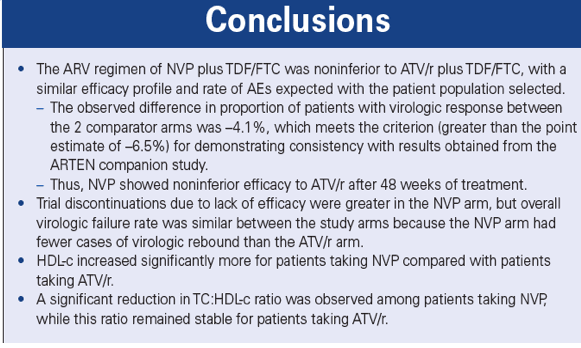

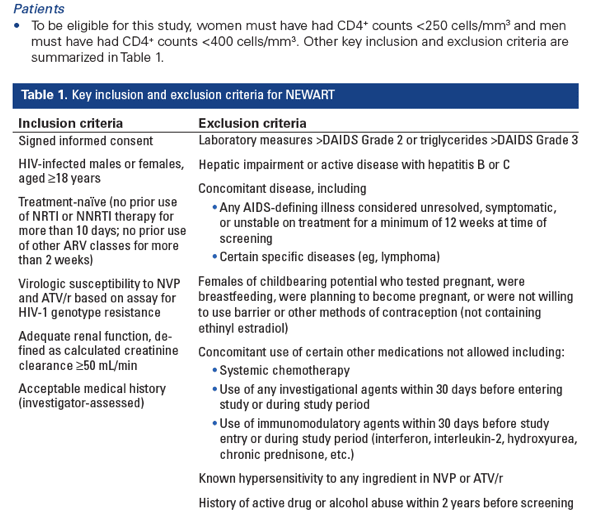
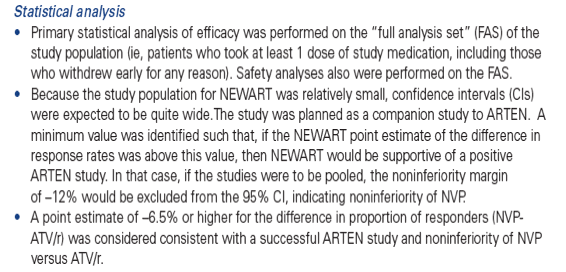
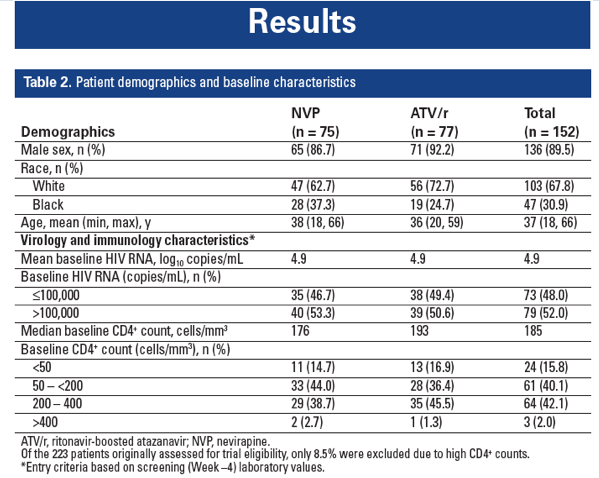
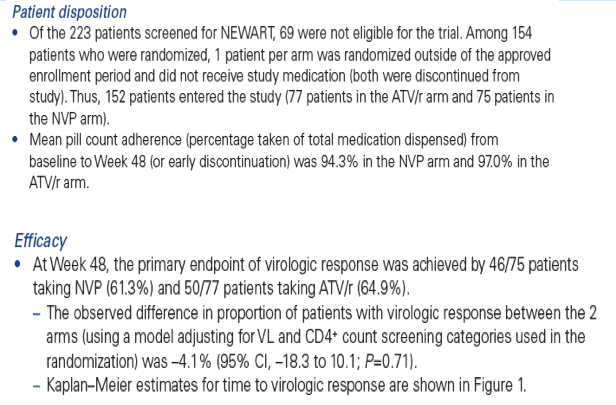
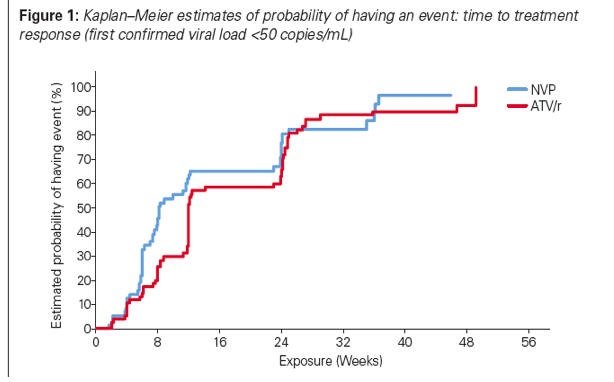
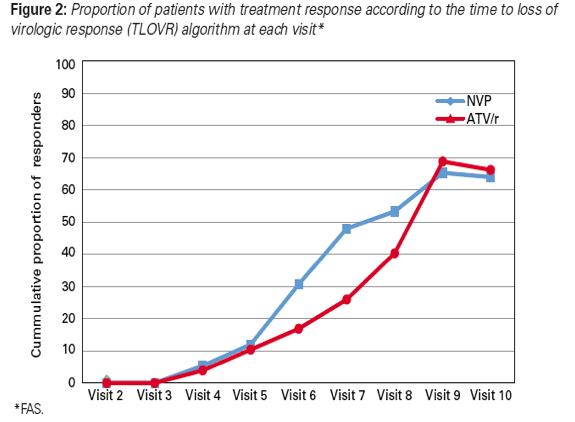
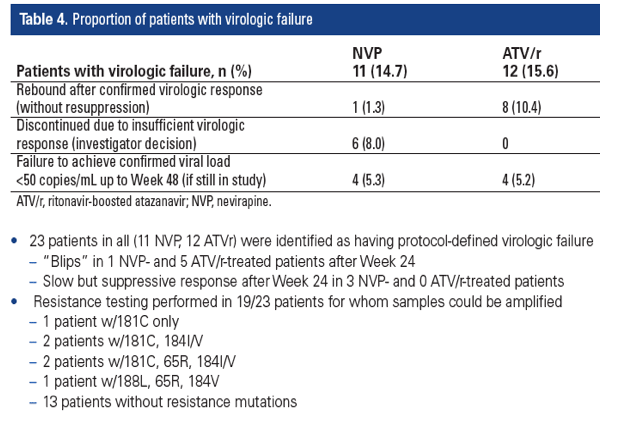
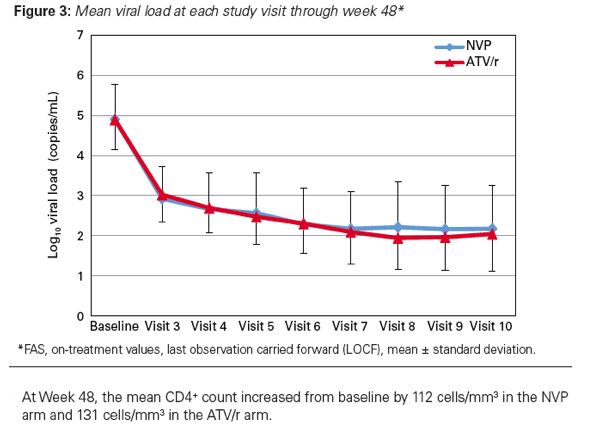
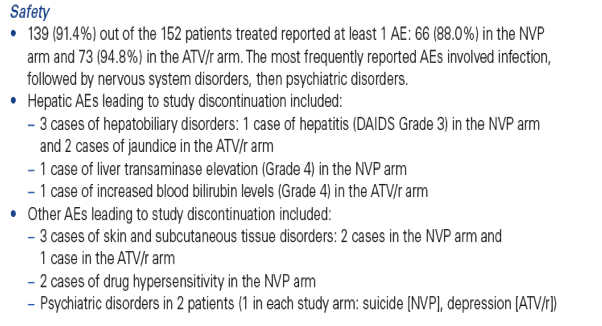
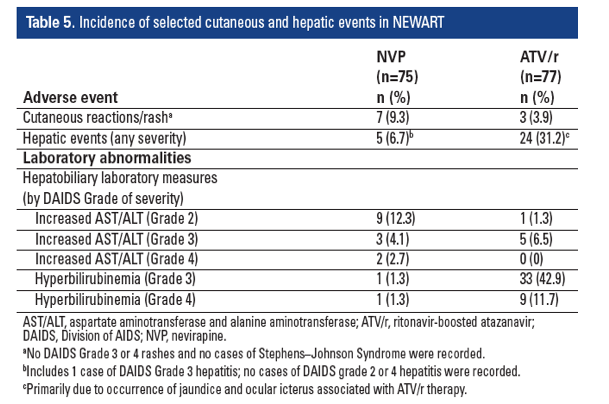

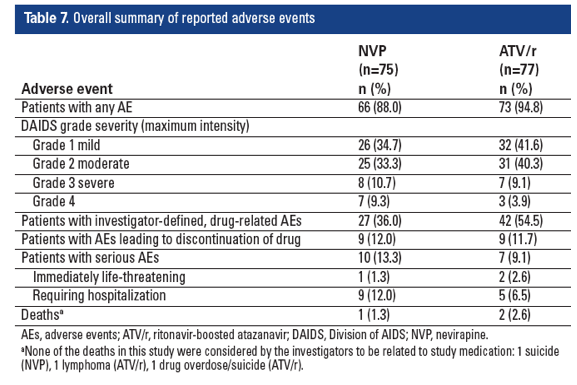
|
| |
|
 |
 |
|
|